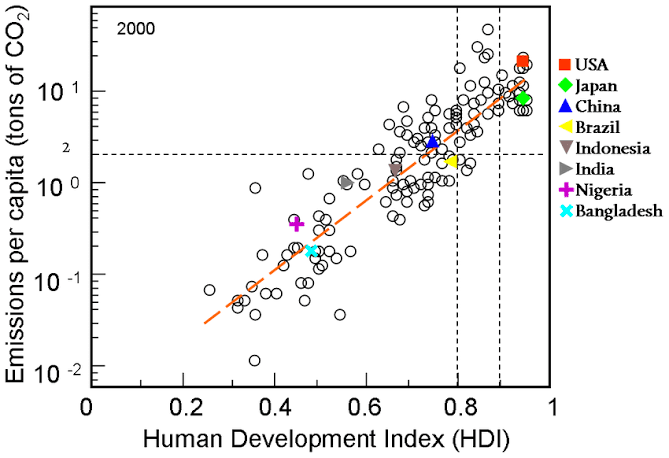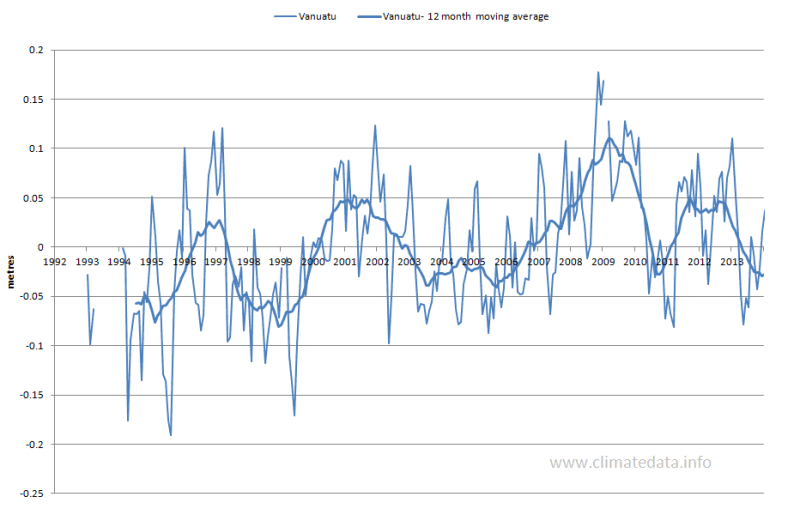Navigation
Install the app
How to install the app on iOS
Follow along with the video below to see how to install our site as a web app on your home screen.
Note: This feature may not be available in some browsers.
More options
Style variation
-
Congratulations cowski on being selected by the Eng-Tips community for having the most helpful posts in the forums last week. Way to Go!
You are using an out of date browser. It may not display this or other websites correctly.
You should upgrade or use an alternative browser.
You should upgrade or use an alternative browser.
Things are Starting to Heat Up - Part VII 21
- Thread starter dik
- Start date
- Status
- Not open for further replies.
- Thread starter
- #281
Maybe I should have said, let's be MORE efficient with the money we spend.
Sorry, it was the mention of govt reducing a problem that had me giggling.
The problem is that, on a per capita basis, the US has nearly twice the carbon footprint as China and nearly 10 times that of India..
Yet the US is overwhelmingly a clean, healthy place to live. Meanwhile China and India have serious issues with death and disease causes by lack of basic sanitation and availability of clean water and air.
- Thread starter
- #283
look at the population density with person/sq.ft. It's a different 'can of worms'... and general quality of life... not related to carbon footprint, except for travel distances involved and maybe a couple of minor issues. The higher quality of life may have a real impact on the carbon footprint.
-----*****-----
So strange to see the singularity approaching while the entire planet is rapidly turning into a hellscape. -John Coates
-Dik
-----*****-----
So strange to see the singularity approaching while the entire planet is rapidly turning into a hellscape. -John Coates
-Dik
Dik said:The higher quality of life may have a real impact on the carbon footprint.
There “may” be a relationship between the two. Seriously?

JoshPlumSE
Structural
TomF said:There “may” be a relationship between the two. Seriously?
Excellent graph! Can you point us towards the citation source?
CWB1 said:Sorry, it was the mention of govt reducing a problem that had me giggling.
No, I got the joke. And, I agree that the government is inherently inefficient. Heck, look at NASA..... Once someone in private industry (SpaceX) finally started to compete against them for rocket launching and the price goes WAY down and the innovations increase dramatically.
However, we are in a situation where the government is spending billions of dollars subsidizing the desire of rich people to virtue signal to their friends and neighbors about how much they care about the environment all while continuing to fly halfway around the world on private jets whenever they want to impress someone about where they went for vacation this month.
We really need to make an ATTEMPT to get the government to spend these billions in a way that will more efficiently do what they say they want to do.
GregLocock
Automotive
Here's the interactive version
Cheers
Greg Locock
New here? Try reading these, they might help FAQ731-376
Cheers
Greg Locock
New here? Try reading these, they might help FAQ731-376
- Thread starter
- #287
more news...
-----*****-----
So strange to see the singularity approaching while the entire planet is rapidly turning into a hellscape. -John Coates
-Dik
-----*****-----
So strange to see the singularity approaching while the entire planet is rapidly turning into a hellscape. -John Coates
-Dik
GregLocock
Automotive
Grins, intensely corrupt government joins bandwagon to extract cash from richer countries. I bet none of you could find Vanuatu on the map without googling or equivalent. Nice place, lousy government.

4 inches? OMG. How do they cope with daily tides of 3 feet or so?
Cheers
Greg Locock
New here? Try reading these, they might help FAQ731-376

4 inches? OMG. How do they cope with daily tides of 3 feet or so?
Cheers
Greg Locock
New here? Try reading these, they might help FAQ731-376
look at the population density with person/sq.ft.
....hence why comparing per-capita emissions worldwide is absurd. If a country is severely overpopulated obviously their allowable per-capita emissions should be lower than others without that issue. Moreover, the environment's ability to filter pollutants varies significantly worldwide, desert does not filter like dense forests.
Following your illogic does not resolve anything, it simply creates more issues. Punish the polluters not the clean countries.
- Thread starter
- #291
Not at all... two distinct issues. Often, however countries with a high population density are often third world countries. Per capita is the way to go... it shows how the carbon output is on a personal basis, and avoids the issue where India or China has a high carbon content... and misses the fact that the population is China is 5x that of the US or that on a per capita basis, because India has such a high populaton, their contribution to the problem is 1/10 that of the US.
for example:
The population density of India in 2022 was 431.11 people per square kilometer, a 0.68% increase from 2021. The population density of India in 2021 was 428.19 people per square kilometer, a 0.8% increase from 2020. The population density of India in 2020 was 424.79 people per square kilometer, a 0.96% increase from 2019. Download Historical Data
The current population density of Hong Kong in 2023 is 6,749.20 people per square kilometer, a 0.04% increase from 2022. The population density of Hong Kong in 2022 was 6,746.73 people per square kilometer, a 0.08% decline from 2021. The population density of Hong Kong in 2021 was 6,751.87 people per square kilometer, a 0.09% decline from 2020.
The current population density of Monaco in 2023 is 484.48 people per square kilometer, a 0.47% decline from 2022. The population density of Monaco in 2022 was 486.77 people per square kilometer, a 0.59% decline from 2021. The population density of Monaco in 2021 was 489.67 people per square kilometer, a 0.64% decline from 2020.
-----*****-----
So strange to see the singularity approaching while the entire planet is rapidly turning into a hellscape. -John Coates
-Dik
for example:
The population density of India in 2022 was 431.11 people per square kilometer, a 0.68% increase from 2021. The population density of India in 2021 was 428.19 people per square kilometer, a 0.8% increase from 2020. The population density of India in 2020 was 424.79 people per square kilometer, a 0.96% increase from 2019. Download Historical Data
The current population density of Hong Kong in 2023 is 6,749.20 people per square kilometer, a 0.04% increase from 2022. The population density of Hong Kong in 2022 was 6,746.73 people per square kilometer, a 0.08% decline from 2021. The population density of Hong Kong in 2021 was 6,751.87 people per square kilometer, a 0.09% decline from 2020.
The current population density of Monaco in 2023 is 484.48 people per square kilometer, a 0.47% decline from 2022. The population density of Monaco in 2022 was 486.77 people per square kilometer, a 0.59% decline from 2021. The population density of Monaco in 2021 was 489.67 people per square kilometer, a 0.64% decline from 2020.
-----*****-----
So strange to see the singularity approaching while the entire planet is rapidly turning into a hellscape. -John Coates
-Dik
- Thread starter
- #294
Hokie... nature may do that for you... just don't know where she (binary term for PC) will stop. It could be both, Tom...
This could be the beginning of it... thinning the herd...
"Meteorologists said conditions on Friday were similar to those a week ago that unleashed the devastating twister that killed at least 21 people and damaged about 2,000 homes in Mississippi."
-----*****-----
So strange to see the singularity approaching while the entire planet is rapidly turning into a hellscape. -John Coates
-Dik
This could be the beginning of it... thinning the herd...
"Meteorologists said conditions on Friday were similar to those a week ago that unleashed the devastating twister that killed at least 21 people and damaged about 2,000 homes in Mississippi."
-----*****-----
So strange to see the singularity approaching while the entire planet is rapidly turning into a hellscape. -John Coates
-Dik
- Thread starter
- #295
There may be more mechanisms at play...
-----*****-----
So strange to see the singularity approaching while the entire planet is rapidly turning into a hellscape. -John Coates
-Dik
-----*****-----
So strange to see the singularity approaching while the entire planet is rapidly turning into a hellscape. -John Coates
-Dik
TugboatEng
Marine/Ocean
GregLocock
Automotive
And yet a year ago you were moaning about La Nina and the floods in Australia. It's called weather.
Cheers
Greg Locock
New here? Try reading these, they might help FAQ731-376
Cheers
Greg Locock
New here? Try reading these, they might help FAQ731-376
enginesrus
Mechanical
dik, I guess you haven't studied what I have posted? There is a good reason for all the bad weather nowadays. And has zero to do with NOx, Co2 and on and on.
- Thread starter
- #299
Bridgetown Initiative... a sign of things to come?
-----*****-----
So strange to see the singularity approaching while the entire planet is rapidly turning into a hellscape. -John Coates
-Dik
-----*****-----
So strange to see the singularity approaching while the entire planet is rapidly turning into a hellscape. -John Coates
-Dik
GregLocock
Automotive
Another grubby governement with their hands in your wallet. "For the Caribbean region, the good news is that changes in dynamic sea-level extremes in the high-resolution model projects a much lower sea-level rise than the low-resolution model, in particular for the many island areas in the eastern part of the region."
2mm/year. 8 inches a century.
Cheers
Greg Locock
New here? Try reading these, they might help FAQ731-376
2mm/year. 8 inches a century.
Cheers
Greg Locock
New here? Try reading these, they might help FAQ731-376
- Status
- Not open for further replies.
Similar threads
- Replies
- 163
- Views
- 85K
- Replies
- 32
- Views
- 15K
- Locked
- Question
- Replies
- 362
- Views
- 28K
- Locked
- Question
- Replies
- 355
- Views
- 12K
- Locked
- Question
- Replies
- 366
- Views
- 12K
